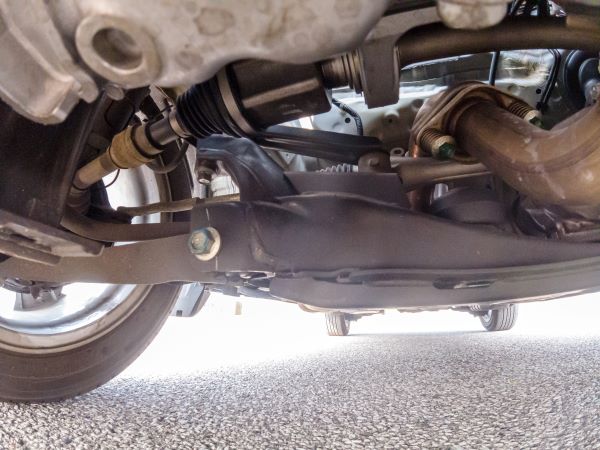Navigating the Complexities of Your Electric Power Steering System
Have you ever experienced a sudden loss of responsiveness while turning your steering wheel? Issues with an electric power steering system can quickly turn a routine drive into a stressful situation. For reliable power steering repair in Camas, WA, look no further than Springs Brake and Suspension, where our experienced technicians provide comprehensive solutions to ensure your vehicle is handled precisely.
Understanding the Electric Power Steering System
Modern vehicles increasingly rely on electric power steering systems (EPS) for enhanced efficiency and control. Unlike traditional hydraulic systems, EPS utilizes an electric motor to assist with steering efforts. This system offers several advantages, including improved fuel economy and reduced maintenance requirements. However, like any complex system, EPS can encounter problems.
Delving into the Intricacies of EPS: Common Faults and Their Impacts

Common EPS Faults: Torque Sensor Malfunction
The shift towards EPS has transformed the driving experience, but it also introduces unique failure points. Understanding these common faults is crucial for maintaining optimal vehicle performance. One prevalent issue is the malfunction of the torque sensor, which measures the force applied to the steering wheel. When this sensor fails, the EPS system may provide erratic or inconsistent assistance, making it challenging to control the vehicle.
Control Module Issues
Another critical component is the control module, which processes sensor data and regulates the electric motor. Software glitches, electrical shorts, or physical damage can disrupt the control module’s function, leading to a complete loss of power assist. This can result in steering difficult, especially at low speeds or during tight maneuvers.
Electric Motor Wear and Tear
Furthermore, the electric motor itself can experience wear and tear over time. Brushes can wear out, bearings can fail, or the winding can short circuit, causing the motor to operate inefficiently or fail entirely. Environmental factors, such as extreme temperatures or moisture, can accelerate these issues.
Electrical Connections and Wiring Problems
Electrical connections and wiring are also vulnerable to damage. Corrosion, loose connections, or frayed wires can interrupt the flow of power to the EPS system, leading to intermittent or complete failure. This is often the cause of many minor issues that can become major repairs if left unchecked.
Impacts of EPS Faults on Vehicle Safety
The impact of these faults extends beyond mere inconvenience. A malfunctioning EPS system can compromise vehicle safety, particularly in emergency situations. A sudden loss of power assist can make it difficult to avoid obstacles or maintain control, increasing the risk of accidents. Therefore, timely diagnosis and repair are essential.
Do You Need Power Steering Repair or Inspection Service?
Don’t wait—schedule your power steering service appointment today!
Best Practices and Troubleshooting for Electric Power Steering Issues
When dealing with potential EPS problems, several best practices can help identify and address the root cause. Here’s a breakdown of common issues and how to approach them:
- Check for Warning Lights: The first step is to observe the dashboard for any warning lights related to the power steering system. Modern vehicles are equipped with sophisticated diagnostic systems that can alert drivers to potential issues.
- Inspect Electrical Connections: Loose or corroded electrical connections can disrupt the flow of power to the electric motor, causing intermittent or complete failure of the EPS system.
- Evaluate Sensor Functionality: Sensors play a crucial role in providing feedback to the EPS control module. Malfunctioning sensors can lead to inaccurate steering assistance.
- Monitor Motor Performance: The electric motor itself can fail due to wear and tear or electrical faults. Listen for unusual noises, such as whining or grinding, which may indicate a failing motor.
- Software and Calibration: Modern EPS systems rely on software for optimal performance. Updates or recalibrations may be necessary to address software glitches or ensure proper system functionality.
- Seek Professional Assistance: For complex issues, it’s essential to consult with expert technicians at Springs Brake and Suspension. We possess the necessary tools and knowledge to diagnose and repair your EPS system effectively.
- Regular Inspections: While EPS systems require less fluid maintenance, regular visual inspections of the electrical components are necessary.
- Alignment Services: Make sure to keep up with alignment services. Improper alignment can put more stress on the electric power steering system.
- Check the Battery: A weak battery can cause electronic systems to malfunction. Ensure your battery is in good condition.
- Inspect Fuses and Relays: Fuses and relays protect the electrical components of the EPS system. Check for blown fuses or faulty relays.
- Listen for Unusual Sounds: Pay attention to any unusual sounds, such as clicking, grinding, or whining, when turning the steering wheel. These sounds may indicate a problem with the electric motor or other components.
- Test Steering Response: Perform a simple test by turning the steering wheel from side to side while parked. Notice any resistance, looseness, or inconsistent assistance.
- Review Vehicle History: Check your vehicle’s maintenance records for any previous EPS-related issues or repairs.
- Check for Software Updates: Modern vehicles often receive software updates that can improve the performance and reliability of the EPS system. Check with your dealership or a qualified technician for available updates.
- Maintain Proper Tire Pressure: Proper tire pressure is essential for optimal steering performance. Underinflated or overinflated tires can affect the EPS system’s ability to provide accurate assistance.
- Avoid Overloading the Vehicle: Overloading the vehicle can put additional strain on the EPS system, leading to premature wear and failure.
- Drive Smoothly: Avoid aggressive driving maneuvers, such as sudden turns or rapid acceleration, which can put unnecessary stress on the EPS system.
Springs Brake and Suspension: Your Solution for Power Steering Repair in Camas, WA
Addressing electric power steering system problems promptly is crucial for maintaining vehicle safety and performance. At Springs Brake and Suspension, we understand the complexities of modern EPS systems and are committed to providing quality service to drivers in Camas, WA and the surrounding areas. Don’t hesitate to contact our auto repair shop for a thorough inspection and experience our customer service excellence. Trust us to ensure your vehicle’s steering system operates smoothly, allowing you to navigate the road with confidence. For all your Power Steering Repair Camas WA needs, rely on the experienced technicians at Springs Brake and Suspension.
Do You Need Power Steering Repair or Inspection Service?
Don’t wait—schedule your power steering service appointment today!

